Hello, my name is Logan Stephens and over the next five weeks, I will be doing my internship in the chemistry department at the University of Houston.
This week I mostly spent my time practicing the techniques I will need to use in the future for my project. These include stamping, which is the process of getting the thin layers of molecules onto the gold slide. Though it may seem simple, it takes a lot of finesse and attention to detail as it is very important that the sample is kept clean on a molecular level. If they are not kept clean, then the pattern on the stamp will not show up clearly, if at all.
Stamped Gold Slide
After getting the stamping process down, I then moved on to actually looking at the patterns with the ellipsometer. The imaging ellipsometer uses a specialized camera/microscope in order to view the sample in high magnification and detail.
Imaging Ellipsometer
Pattern viewed under the Imaging Ellipsometer
In addition to the techniques involving optics, I am also learning about cyclic voltammetry (CV), which is a measuring technique that uses electrochemistry. In short, the current is measured based on how much voltage is applied to the sample. Based on the various peaks in current, one can tell what molecule is on the sample, and also whether the sample is pure or not. The particular reason for using CV in my case is to determine whether my sample is pure, and in good condition or not by comparing the CV graph to the graphs of other groups who know for certain that their samples are pure.
Electric Cell Setup used for CV
CV Graph
Apart from measuring techniques, a couple of the group members have been working on designing the electric cell that will be used for the project. The cell must have a special design so that the sample can be measured via ellipsometry while it is exposed to various levels of voltage. This means that a laser must be able to penetrate the cell, and also reflect back out of the cell in order for measurements to be taken. Once the cell is designed and constructed, we will able to get started on experimentation.

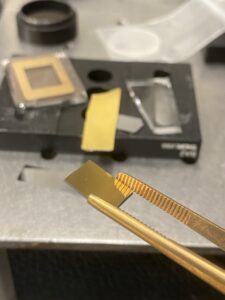
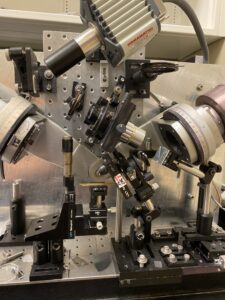
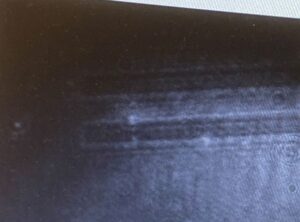
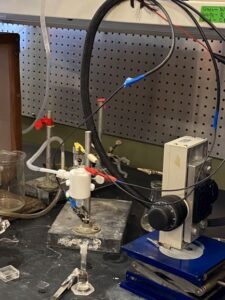
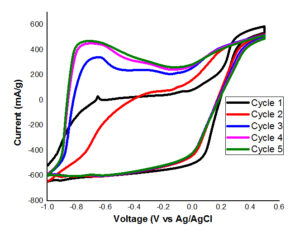
There are no comments published yet.